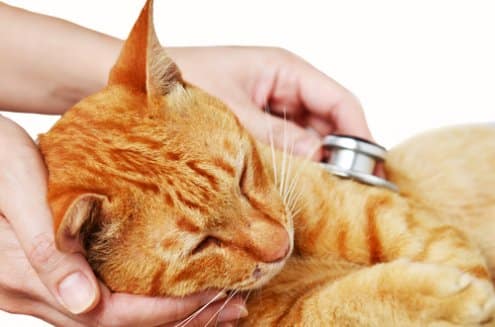It’s important to remember that just like humans, some animals are susceptible to hyperglycemia and can be at risk of developing diabetes. The first studies in diabetes were done primarily on dogs, who are shown to have mechanisms of diabetes similar to type 1 diabetes in humans. Cats can also present as being in hyperglycemic states. It often occurs in conjunction with episodes of high stress or by other mechanisms leading to pancreatitis.
Some of the signs are similar to what is seen in dogs and can include:
- dehydration or increased thirst;
- frequent urination;
- frequent feeding;
- extreme weight loss or obesity;
- in more extreme cases, nerve damage in legs, non-healing wounds, and cataracts.
When hyperglycemia in cats leads to diabetes
Feline hyperglycemia may be indicator for diabetes. It is important to make sure that if your cat is showing any of the signs described that you have it checked to determine the cause of those signs. In the case that it does develop into feline diabetes, researchers have found that the mechanism bears much similarity to type 2 diabetes in humans. An overall similarity is that cats that are diagnosed with hyperglycemia or diabetes are usually obese, middle aged, and are in physiological situations where low levels of insulin are being produced (pancreatitis can be cause of this). A recent study went so far as to compare the islet amyloidosis deposits and B-cell loss of the pancreas and found that both were functions that were unique to both humans and cats, suggesting that cats may be an effective model for studying type 2 diabetes in humans.
Is my cat at risk?
Researchers found that when comparing all domestic breeds, Burmese cats tended to develop diabetes more often. Independent of breed, they also found that being male, being overweight, being inactive, being neutered, or having history of corticosteroid use for treatment are all factors that lend to increasing the risk of developing hyperglycemia or diabetes.
Managing and preventing feline hyperglycemia and diabetes
Given the correlations found among cats’ extrinsic factors and the incidence of hyperglycemia and diabetes, there are several things that can be done to manage and prevent the conditions. Having a diet that is appropriate to feline lifestyles is important. Diets that are high in protein and low in carbohydrates have shown to be ideal in disease prevention. It is also a good idea to regulate your cat’s food portions, so that it is not consuming too many calories that can raise its blood sugar. If your cat is being neutered, understand the post-surgical risks associated with the procedure as it relates to hyperglycemia and diabetes. Corticosteroids, seeing as they do pose some risk in your cat developing hyperglycemia or diabetes, should be avoided as a medication if possible. Above all, it is important to make sure that your cat is checked up regularly with a veterinarian in case any signs do appear.
Disclaimer: Please note that the contents of this community article are strictly for informational purposes and should not be considered as medical advice. This article, and other community articles, are not written or reviewed for medical validity by Canadian Insulin or its staff. All views and opinions expressed by the contributing authors are not endorsed by Canadian Insulin. Always consult a medical professional for medical advice, diagnosis, and treatment.


